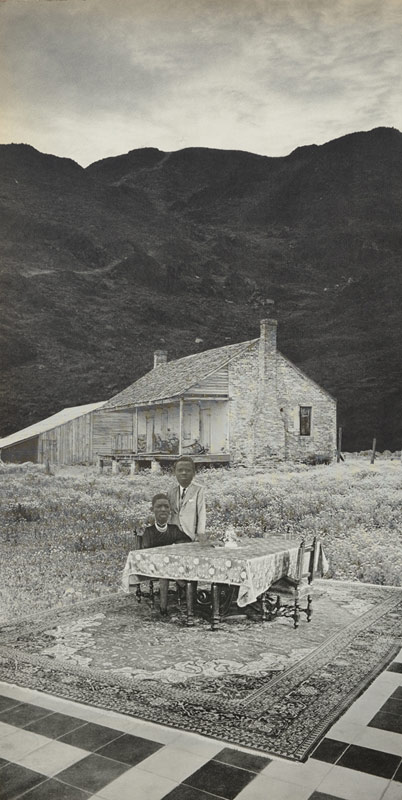The work on view portrays a disconcerting, fictional natural landscape populated with fantastic hybrid creatures, such as bird-people, recalling the illuminated manuscript of the thirteenth-century. Zilberman ascribes great importance to his work process. He quickly scans book pages, locates the ones he deems most appropriate – depending on paper type and texture, as well as the image size and position – and then defaces and appropriates fragments from them. Finally, like an adept surgeon, he joins them together, creating a whole new, alternative reality. The materiality and condition of the printed papers, attesting to their former existence, are evident in the final image, expanding its meaning. The collage practice, surreal landscapes and hybrid figures may be understood as challenging power relations within the cultural and social order and as a reflexive contemplation on photography.The nomadic theme finds expression in various aspects of this work process, portraying the artist as a contemporary flaneur wandering among a multitude of images. The images are cut and combined with others in a way that makes their origin unclear while recontextualizing them in universal, intercultural settings.
The artist’s journey resonates with his moves, indicating points of disconnection and connection among the “treasures” he has gleaned from the originals he has visited. This gathering may be regarded, in light of Deleuze and Guattari’s notions, as a territorial practice of the nomad artist – that is, marking his territory or ownership of the settings and objects he has come across in his journey. The eyes of the figures are covered, releasing them from their concrete existence and allowing the viewer to project his or her own personal world onto them. In addition, this covering effect undermines our viewing, raising questions as to what transpires beneath the surface. In addition, the panorama on the wall presents an inquisitive field of vision by not allowing the viewer’s gaze to see all of it at once. One is required to draw nearer and away again, each time re-encoding the details perceived and processing the images into a semblance of coherence. The various perception routes outlined through the panorama by one’s gaze generate diverse syntactic, subjective image sequences, which continue being woven as long as the gaze lingers.
Tal Bechler










